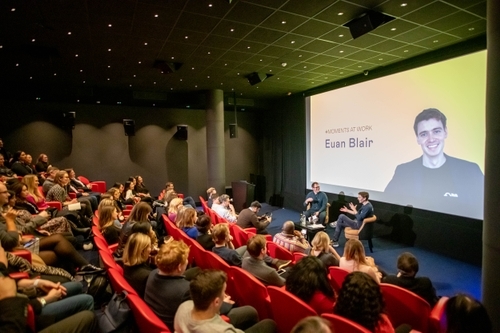As the war for talent acquisition intensifies, talent retention becomes harder. Why should skilled employees stay with a company when more attractive options exist?
Competitive compensation and benefits are no longer enough; today’s top talent, especially younger generations, seek deeper meaning from their work, prioritising purpose, growth, and appreciation.
What unlocks employee loyalty? Thoughtful recognition. More than just trophies and plaques, modern recognition is about understanding what makes each employee feel valued and appreciated as individuals.
By nurturing an engaging and supportive culture, organisations that regularly recognise achievements are more likely to retain their stars.
- Why is recognition key for retention?
- Signs that your best people might leave
- Creative tactics to add meaningful recognition to your culture
Why Recognition Is Critical for Retention
To understand why recognition initiatives can be so powerful for retention, it helps to examine why valued employees might leave in the first place, and among the top reasons is a perceived lack of appreciation. Research shows that 79% of employees who quit say a lack of appreciation was a major factor in their decision; even more so than compensation.
Appreciation and recognition feed intrinsic motivation by making people feel respected, affirmed, and included. Even small gestures to celebrate wins or highlight extra effort can be impactful. In contrast, a lack of recognition breeds disengagement over time. Employees who see their hard work go unnoticed will look elsewhere. And even if they stay, they operate with low morale and reduced performance.
The downstream impacts of losing top talent can be immense. First, there are the hard costs of recruiting, onboarding, and training a replacement, which can equal 50-60% of the former employee’s salary for skilled positions. There are also soft costs like the loss of institutional knowledge, a decline in team morale, and damage to your employer brand.
The conclusion is clear: when top talent leaves, you lose more than just employees. When you invest in thoughtful recognition initiatives, you can prevent them from walking out the door.
Warning Signs It Is Time for More Recognition
When employees feel disengaged and unappreciated, they do not leave right away. This sentiment has likely been building for some time, and there are telling signs. These are what you should look out for:
- Lack of excitement about work – You notice a marked decrease in passion, drive, and excitement from a previously motivated employee. They seem bored, going through the motions without their old vitality. Disengagement could indicate they feel underappreciated.
- Disinterest in developmental opportunities – An ambitious high performer suddenly becomes uninterested in projects, initiatives, or training opportunities that could help them grow their skills. Coasting could mean they have lost motivation due to inadequate recognition.
- Withdrawal from culture and teams – Employees thrive when they feel connected to co-workers. If a formerly engaged person stops participating in team activities or pulls away from relationships, they are likely unfulfilled professionally.
- Passing up promotions or offers – Turning down internal promotions is a huge red flag that a valued employee has mentally checked out. Refusing external job offers also signals someone might leave soon if recognition is lacking.
- Cynicism and negativity – Once optimistic employees who frequently complain or criticise decisions likely crave more positive reinforcement.
In general, dramatic attitude shifts, cultural withdrawal, and decreased ambition from previously engaged employees indicate it is time to double down on recognition before those valued people disengage further or quit.
Feeling nervous about recognition? Don’t worry, we can help 👉 Book a demo
Tips and Best Practices to Get Employee Recognition Right
Now that we have covered why strategic recognition matters for retention and how to identify at-risk employees, let us discuss some innovative ideas to bake more meaningful recognition into your culture.
1. Tie recognition to your values
We leverage Rewards, Moments and Boosts that connect back to core values. Why? They are powerful. Explain to your employees exactly how their actions lived up to values like innovation, teamwork, etc. Values help give extra context and meaning to recognition.
2. Recognise effort before outcome
Highlight hard work and dedication by calling out effort, not just successful results. Recognising the process makes employees feel seen along the way and reduces the anxiety that stems from fear of failure.
3. Small, frequent moments
Casual recognition delivered in small doses can be very impactful. It also does not have to cost a fortune. There are many cost-effective ways to recognise employees and boost morale such as handwritten thank-you cards or verbal shoutouts in a meeting.
4. Cross-functional appreciation
Getting “caught doing something right” by leaders across departments can feel extra meaningful. Employees see how accolades reach beyond their core team.
5. Encourage peer-to-peer recognition
Co-worker recognition is powerful, arguably more so than manager-led recognition. This form of social recognition feeds our innate human need for social approval.
6. Stay specific with details
Generic praise feels empty while calling out specifics on contributions demonstrates you notice and appreciate unique talents.
7. Publicise awards
Announce awards via email, at meetings, on intranet sites, on Mo, etc. Other employees take note, amplifying the signal that top talent gets rewarded here.
8. Get creative with rewards
Offer rewards like choosing fun team activities, opportunities to develop skills, leadership lunches, gift cards, paid time off, charity donations made in their name, and more.
9. Listen to employee recognition preferences
Employees can have different motivation drivers. Do not be afraid to have open conversations with employees about how they most like to be recognised and rewarded. Dedicating some time to solicit direct input is also an opportunity for you to understand where your initiatives might be lacking. You can do this with engagement surveys or just by asking during check-ins. Getting recognition right ultimately comes down to understanding your people.
Leveraging Recognition: Key Takeaways
All employees crave feeling valued for their efforts and want to know their contributions matter. Failing to appreciate your best people paves the exit ramp for them to leave once better external opportunities arise.
It is not too late to act. Make sending Moments and Rewards a company-wide habit, and create special rewards for top performers, veteran experts, rising stars, and people in high turnover roles. Be sure to also watch out for warning signs like decreased excitement, withdrawn behaviour, or passed-up promotions.
By leveraging recognition to engage your top talent, you will hold onto the human capital that drives performance – and gain a retention advantage over competitors as your reputation as a rewarding workplace to build a career spreads.




